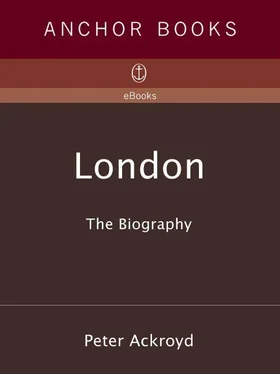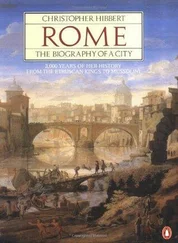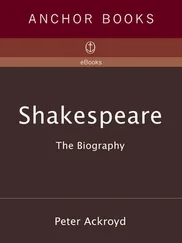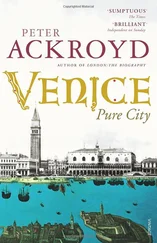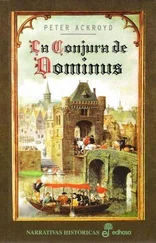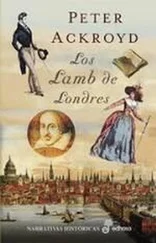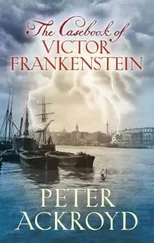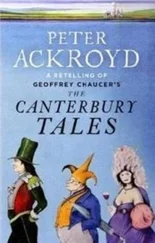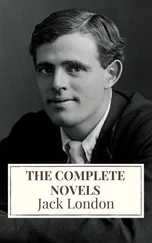Peter Ackroyd - London - The Biography
Здесь есть возможность читать онлайн «Peter Ackroyd - London - The Biography» весь текст электронной книги совершенно бесплатно (целиком полную версию без сокращений). В некоторых случаях можно слушать аудио, скачать через торрент в формате fb2 и присутствует краткое содержание. Год выпуска: 2000, ISBN: 2000, Жанр: Биографии и Мемуары, на английском языке. Описание произведения, (предисловие) а так же отзывы посетителей доступны на портале библиотеки ЛибКат.
- Название:London: The Biography
- Автор:
- Жанр:
- Год:2000
- ISBN:9781400075515
- Рейтинг книги:5 / 5. Голосов: 1
-
Избранное:Добавить в избранное
- Отзывы:
-
Ваша оценка:
- 100
- 1
- 2
- 3
- 4
- 5
London: The Biography: краткое содержание, описание и аннотация
Предлагаем к чтению аннотацию, описание, краткое содержание или предисловие (зависит от того, что написал сам автор книги «London: The Biography»). Если вы не нашли необходимую информацию о книге — напишите в комментариях, мы постараемся отыскать её.
London: The Biography — читать онлайн бесплатно полную книгу (весь текст) целиком
Ниже представлен текст книги, разбитый по страницам. Система сохранения места последней прочитанной страницы, позволяет с удобством читать онлайн бесплатно книгу «London: The Biography», без необходимости каждый раз заново искать на чём Вы остановились. Поставьте закладку, и сможете в любой момент перейти на страницу, на которой закончили чтение.
Интервал:
Закладка:
The origin of the name, however, remains mysterious. (It is curious, perhaps, that the name of the mineral most associated with the city-coal-also has no certain derivation.) With its syllabic power, so much suggesting force or thunder, it has continually echoed through history- Caer Ludd, Lundunes, Lindonion, Lundene, Lundone, Ludenberk, Longidinium , and a score of other variants. There have even been suggestions that the name is more ancient than the Celts themselves, and that it springs from some Neolithic past.
We must not necessarily assume that there were settlements or defended enclosures upon Ludgate Hill or Cornhill, or that there were wooden trackways where there are now great avenues, but the attractions of the site might have been as obvious in the third and fourth millennia BC as they were to the later Celts and Romans. The hills were well defended, forming a natural plateau, with the river to the south, fens to the north, marshes to the east, and another river, later known as the Fleet, to the west. It was fertile ground, well watered by springs bubbling up through the gravel. The Thames was easily navigable at this point, with the Fleet and the Walbrook providing natural harbours. The ancients trackways of England were also close at hand. So from earliest time London was the most appropriate site for trade, for markets, and for barter. The City has for much of its history been the centre of world commerce; it is perhaps instructive to note that it may have begun with the transactions of Stone Age people in their own markets.
All this is speculation, not altogether uninformed, but evidence of a more substantial kind has been discovered in later levels of London earth. In those long stretches of time designated as the “Late Bronze Age” and the “Early Iron Age”-a period spanning almost a thousand years-shards and fragments of bowls, and pots, and tools, were left all over London. There are signs of prehistoric activity in the areas now known as St. Mary Axe and Gresham Street, Austin Friars and Finsbury Circus, Bishopsgate and Seething Lane, with altogether some 250 “finds” clustered in the area of the twin hills together with Tower Hill and Southwark. From the Thames itself many hundreds of metal objects have been retrieved, while along its banks is to be found frequent evidence of metal-working. This is the period from which the great early legends of London spring. It is also, in its latter phase, the age of the Celts.
In the first century BC, Julius Caesar’s description of the region around London suggests the presence of an elaborate, rich and well-organised tribal civilisation. Its population was “exceedingly large” and “the ground thickly studded with homesteads.” The nature and role of the twin hills throughout this period cannot with certainty be given; perhaps these were sacred places, or perhaps their well-defined position allowed them to be used as hill-forts in order to protect the trade carried along the river. There is every reason to suppose that this area of the Thames was a centre of commerce and of industry, with a market in iron products as well as elaborate workings in bronze, with merchants from Gaul, Rome and Spain bringing Samian ware, wine and spices in exchange for corn, metals and slaves.
In the history of this period completed by Geoffrey of Monmouth in 1136, the principal city in the island of Britain is undoubtedly London. But according to modern scholars his work is established upon lost texts, apocryphal embellishments and uninformed conjecture. Where Geoffrey speaks of kings, for example, they prefer the nomenclature of tribes; he dates events by means of biblical parallel, while they provide indicators such as “Late Iron Age”; he elucidates patterns of conflict and social change in terms of individual human passion, where more recent accounts of prehistory rely upon more abstract principles of trade and technology. The approaches may be contradictory but they are not necessarily incompatible. It is believed by historians of early Britain, for example, that a people known as the Trinovantes settled on territory to the north of the London region. Curiously enough, Geoffrey states that the first name of the city was Trinovantum. He also mentions the presence of temples within London itself; even if they had existed, these palisades and wooden enclosures would since have been lost beneath the stone of the Roman city as well as the brick and cement of succeeding generations.
But nothing is wholly lost. In the first four decades of the twentieth century there was a particular effort by prehistorians to discover something of London’s supposedly hidden past. In books such as The Lost Language of London, Legendary London, Prehistoric London and The Earlier Inhabitants of London , tokens and traces of a Celtic or Druidic London were thoroughly examined and were found significant. These studies were effectively killed off by the Second World War, after which urban planning and regeneration became more important than urban speculation. But the original works survive, and still repay close study. The fact that existing street names may betray a Celtic origin-Colin Deep Lane, Pancras Lane, Maiden Lane, Ingal Road among them-is, for example, as instructive as any of the material “finds” recorded on the site of the ancient city. Long-forgotten trackways have guided the course of modern thoroughfares; the crossroads at the Angel, Islington, for example, marks the point where two prehistoric British roads intersected. We know of Old Street leading to Old Ford, of Maiden Lane crossing through Pentonville and Battle Bridge to Highgate, of the route from Upper Street to Highbury, all following the same ancient tracks and buried paths.
Yet there is no more suspect or difficult subject, in the context of this period, than Druidism. That it was well established in Celtic settlements is not in doubt; Julius Caesar, who was in a position to speak with some authority on the subject, stated that the Druid religion was founded (inventa) in Britain and that its Celtic adherents came to this island in order to be educated in its mysteries. It represented a highly advanced, if somewhat insular, religious culture. Of course we might speculate that the oak woodland to the north of the twin hills provided a suitable site for sacrifice and worship; one antiquary, Sir Laurence Gomme, has envisaged a temple or sacred space upon Ludgate Hill itself. But there are many false trails. It was once generally agreed that Parliament Hill near Highgate was a place for religious assembly, but in fact the remnants which have been discovered there do not date from prehistory. The Chislehurst caves in south London, once reputed to be of Druid origin connected in some fashion with the observation of the heavens, are almost certainly of medieval construction.
It has been suggested that the London area was controlled from three sacred mounds; they are named as Penton Hill, Tothill and the White Mound, otherwise known as Tower Hill. Any such theory can readily be dismissed as nonsense, but there are curious parallels and coincidences which render it more interesting than the usual fantasies of latter-day psychogeographers.
It is known that in prehistoric worship a holy place was marked by a spring, a grove and a well or ritual shaft.
There is a reference to a “shrubby maze” in the pleasure gardens of White Conduit House, situated on the high ground of Pentonville, and a maze’s avatar was a sacred hill or grove. Close at hand is the famous well of Sadlers Wells. In recent days the water of this well flowed under the orchestra pit of the theatre but, from medieval times, it was considered holy and was tended by the priests of Clerkenwell. The site of the high ground in Pentonville was also once a reservoir; it was until recently the headquarters of the London Water Board.
Читать дальшеИнтервал:
Закладка:
Похожие книги на «London: The Biography»
Представляем Вашему вниманию похожие книги на «London: The Biography» списком для выбора. Мы отобрали схожую по названию и смыслу литературу в надежде предоставить читателям больше вариантов отыскать новые, интересные, ещё непрочитанные произведения.
Обсуждение, отзывы о книге «London: The Biography» и просто собственные мнения читателей. Оставьте ваши комментарии, напишите, что Вы думаете о произведении, его смысле или главных героях. Укажите что конкретно понравилось, а что нет, и почему Вы так считаете.
